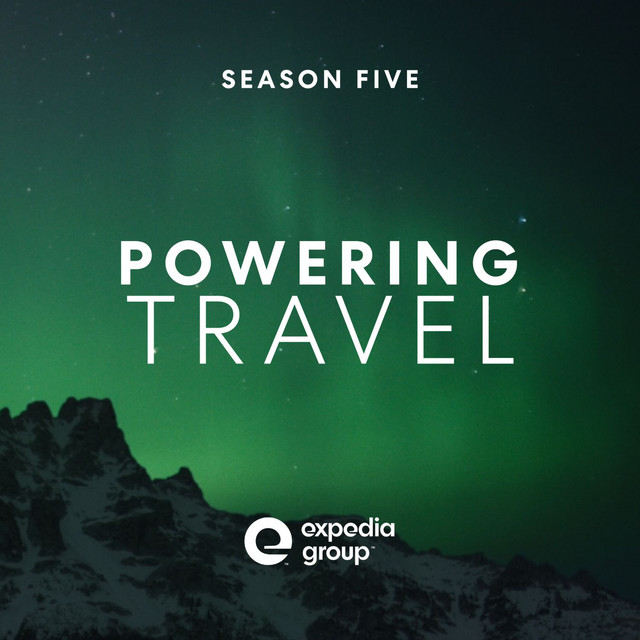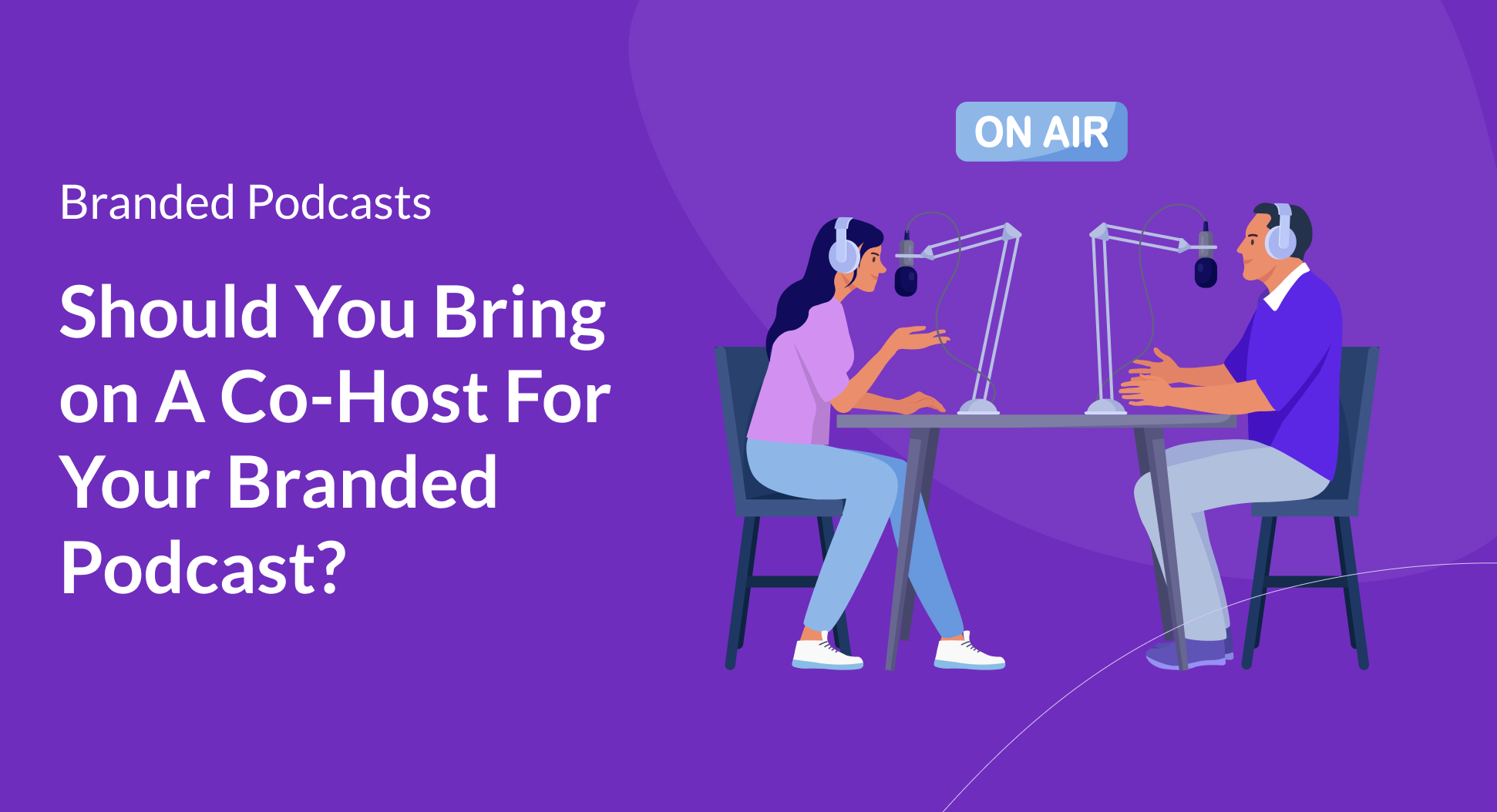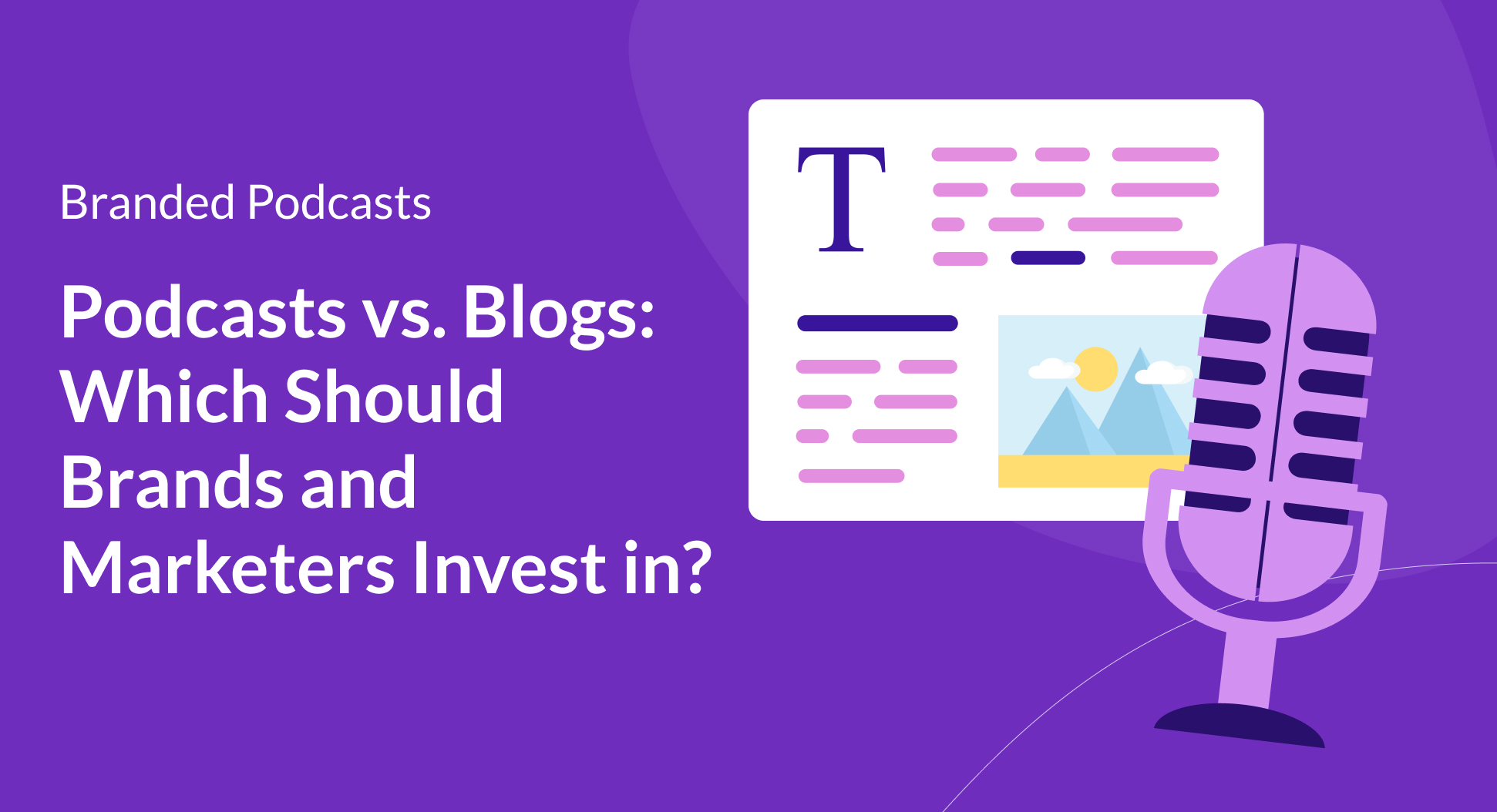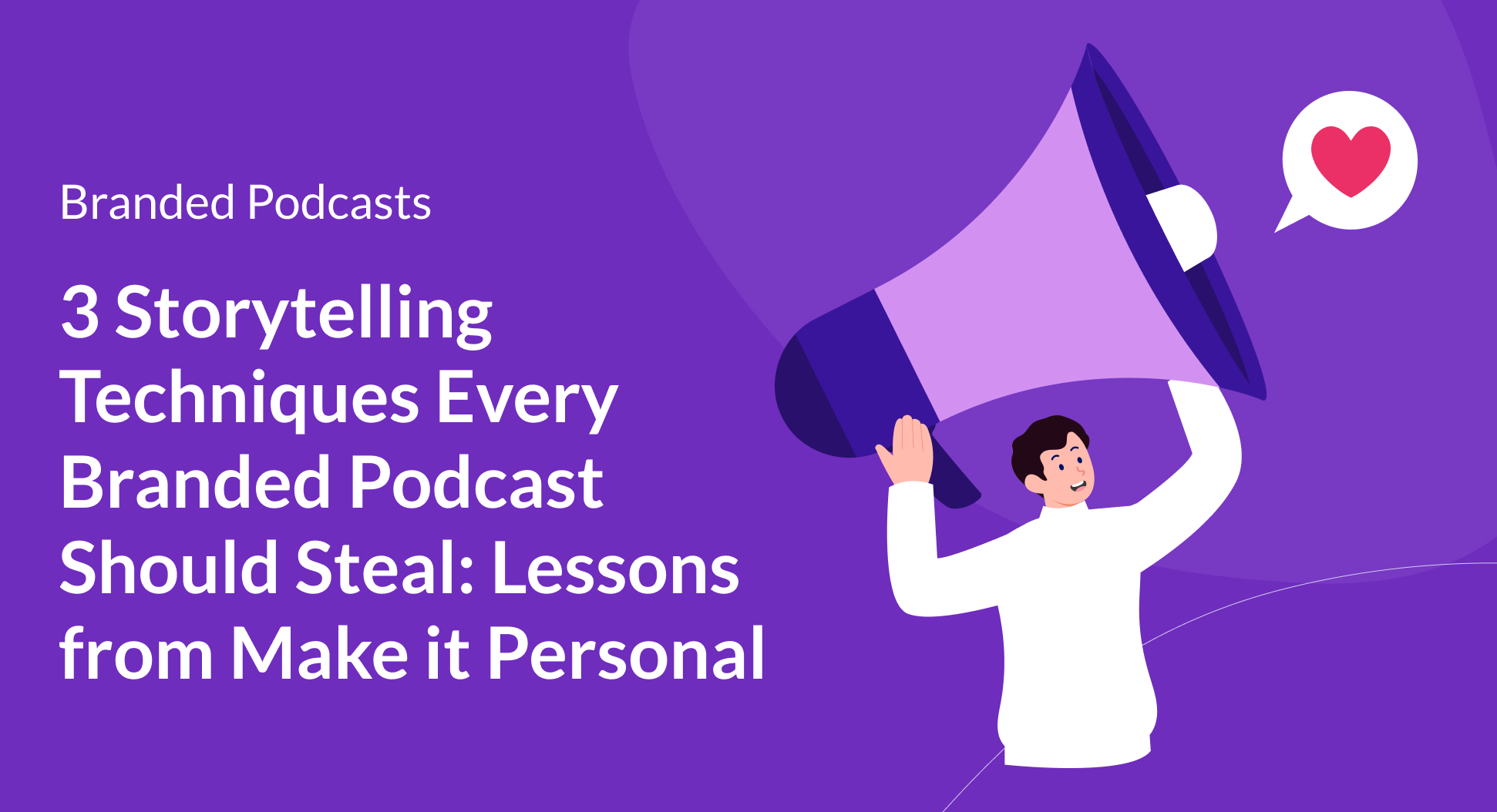Contents
Think about your favorite on-screen duos — Tina Fey and Amy Poehler, Sherlock and Watson, even Bert and Ernie. Part of the magic isn’t just what they do individually; it’s how they play off each other, elevate each other, and make the audience feel like they’re part of the conversation.
The same principle applies to branded podcasts.
Over the last few years, co-hosted shows have been quietly climbing the charts, and it’s easy to see why. Two hosts can turn what might be a monologue into a dynamic conversation, bringing humor, perspective, and energy that most solo hosts simply can’t sustain week after week.
But co-hosts aren’t just for the listeners. From a production standpoint, having two voices can be a lifesaver. They can share the prep work, keep the conversation flowing, and even cover for each other on “off” days. It’s the kind of format that’s repeatable, sustainable, and built for the always-on nature of today’s podcast landscape.
If you’re thinking about adding a co-host to your branded podcast, here’s a guide to help you weigh the benefits, navigate the challenges, and create a partnership that actually works.
Why bring on a co-host for your branded podcast?
Consistency
Podcasts thrive on routine. Your audience wants to know exactly when they can expect a new episode — whether that’s weekly, biweekly, or every Tuesday at 8 a.m. As a solo host, keeping up that cadence is a serious challenge. Life happens. Deadlines loom. Creative energy ebbs and flows.
With a co-host, you have a built-in accountability partner who not only shares the prep work but also keeps the calendar full.
Need a creative boost? Brainstorming with a co-host can spark ideas you might never hit on alone. Feeling burnt out? Sharing the hosting load can make weekly production feel more manageable.
Connection
Co-hosted shows excel at creating that sense of human connection because the conversation mirrors real life: the ebb and flow, the small jokes, the back-and-forth riffing.
When two hosts get their rhythm right, listeners feel like they’re part of the conversation. That ease of listening can make your show stickier than solo monologues or heavily scripted formats – especially when you’re competing with over 4 million podcasts.
Plus, if your podcast is data-heavy or educational, a co-host can humanize the material, resulting in a show that’s informative, engaging, and easier to digest — a rare trifecta in branded content.
Energy
Even the most experienced hosts have days when energy and focus dip. Solo hosts have to carry the conversation on their own, which can make episodes feel flat if momentum stalls. A co-host, by contrast, can balance the dynamic — asking follow-up questions, offering a fresh perspective, or steering the discussion when it starts to lag.
With two hosts, the energy isn’t just about enthusiasm—it’s about pacing, tone, and timing. A strong co-host dynamic ensures that even complex or dense topics remain approachable and compelling, making it easier for audiences to stay tuned from start to finish.
Increased reach
Two hosts mean two networks, two audiences, and two sets of personal branding opportunities. In a crowded podcast landscape, this isn’t just a bonus; it can be a game-changer. Your co-host may introduce listeners who would never have discovered your show otherwise, expanding reach organically.
Strategically, this can be huge for branded podcasts. Not only are you increasing discoverability, but you’re also doubling the potential social amplification, from shares to shoutouts. Two hosts, two voices, twice the opportunity to make a lasting impression.
The challenges of co-hosted branded podcasts
Like with any creative choice, there are also some drawbacks to looping in a co-host. Here are some of the primary challenges:
Twice the cost
Two hosts often double your costs. This isn’t just about money (though two paychecks, if you’re hiring talent, can add up fast). It’s also time: scheduling, prep, editing, and coordinating content all multiply.
Your production team has to be equipped to handle the extra load. Calendar conflicts, script tweaks, and mic checks now happen twice as often. Without the right resources and strategy, co-hosted shows can quickly become a logistical headache.
It’s a classic “more is more” scenario: more energy, more ideas, more potential, but also more management and more friction.
You can’t force chemistry
Having a fun rapport off the clock doesn’t guarantee it will translate on air. In fact, casual banter can backfire: unstructured conversations often drift, repeat themselves, or stall, turning what seemed like natural chemistry into friction for the listener.
The most compelling co-hosted podcasts are rarely as spontaneous as they sound. What feels effortless is usually the result of preparation, thoughtful cueing, and strategic pacing.
Mismatched hosts, on the other hand, can create confusion or fatigue. If the dynamic doesn’t serve the episode, it can frustrate listeners and blur the show’s focus.
Don’t leave out your listeners
Podcasts are inherently intimate — you’re speaking to one person at a time. A strong co-host dynamic can enhance that experience, but overdoing inside jokes or exclusive references risks alienating the audience. Listeners want to feel included, not eavesdropping on a private conversation.
The key is balance: keep the interaction natural and lively, but always oriented toward the listener. When done right, your co-host chemistry draws people in, making them feel like part of the conversation rather than outsiders looking in.
How to create a successful co-hosted branded podcast
Even the most natural duos need a little structure to make a co-hosted podcast stand out. Here are some of our top tips:
Test the chemistry
Even if your co-host is a longtime friend or trusted colleague, it’s worth running a “chemistry test” before going live. Record a mock episode or a short segment and listen critically.
Pay attention to:
- Who naturally leads and who supports?
- Are ideas building on each other or just being repeated?
- Does the dynamic feel warm and inclusive, or competitive and jarring?
These mini experiments can reveal potential friction points and help you understand each other’s natural rhythms.
Define roles early
Every great co-hosting duo has some kind of structure, even if it’s informal. Decide who handles transitions, who introduces topics, and who guides the flow.
Clear roles keep episodes from feeling clunky, especially in complex formats with multiple segments, ad breaks, or listener questions. Roles can rotate from episode to episode, but knowing who’s responsible for what keeps the conversation smooth and the listener engaged.
Plus, the most compelling co-hosted shows thrive on contrast. Different perspectives, expertise, or experiences make conversations richer and more engaging. If both hosts agree on everything, you risk monotony or an echo chamber.
For example, shows where one host is a journalist and the other an industry insider can explore the same topic from two distinct angles, creating insights listeners couldn’t get from a single perspective. Variety in voice and thought keeps the listener curious and invested.
Don’t discount preparation
Preparation doesn’t have to mean memorizing scripts. In fact, rigid scripting can kill the spontaneity that makes co-hosted shows engaging. Instead, agree on talking points, topic order, and key transitions.
Having structure allows room for natural riffs without losing the thread. It ensures that even when one host gets carried away (we’ve all done it), the other can guide the conversation back on track. A little prep goes a long way in keeping episodes focused and enjoyable.
Practice generosity
Co-hosting is a balance of give and take. A strong duo knows when to step back, let the other finish a punchline, or let an idea land without interruption. Generosity fosters a collaborative dynamic that listeners can feel. When both hosts share the spotlight, the show feels more professional, polished, and enjoyable to listen to.
Examples of co-hosted branded podcasts doing it right

The Partnership Economy
In The Partnership Economy, co-hosts David A. Yovanno and Todd Crawford bring complementary perspectives from their work at impact.com. Their dynamic blends strategic insight with practical experience, making complex topics about partnerships and business growth accessible and engaging.

Skin Goals
Skin Goals is co-hosted by Lisa Avalos and Kelly Sitler. The two create a conversation that feels both expert and relatable. Instead of a single voice delivering information, their dialogue allows them to break down complex skincare science, share practical tips, and highlight industry insights in a way that’s engaging for listeners. Their complementary perspectives make the show approachable while reinforcing L’Oréal Dermatological Beauty’s authority in the space.

Powering Travel
Powering Travel brings listeners inside the world of hospitality through candid conversations with industry leaders. Hosts Brandon Ehrhardt and Sally Smith from Expedia Group share their firsthand experience, discuss emerging trends, and uncover practical insights that are shaping the future of travel. Their co-host dynamic keeps the show approachable and engaging, turning complex industry topics into conversations listeners can actually follow and use.

Fissionary
What makes Fissionary such a strong co-hosted podcast is how naturally the hosts tackle complex topics like the climate crisis and energy independence. Their conversations feel curious and grounded, not preachy or overly technical.
Co-hosting branded podcasts: And then there were two
Deciding whether to bring on a co-host isn’t just a creative choice; it’s a strategic one. The right partnership can boost consistency, energy, and reach, while adding perspective and personality that a solo host might struggle to achieve. But it also requires careful planning, clear roles, and ongoing communication to ensure the dynamic serves both the show and the listener.
Before you commit, weigh the benefits against the logistics, be intentional about your partnership, and build a framework that allows both voices to shine.
For more branded podcast tips and strategies, join the community of marketers who subscribe to our bi-weekly podcast newsletter, The Branded Podcaster.






.png)

.png)




.png)
.png)
.png)
.png)